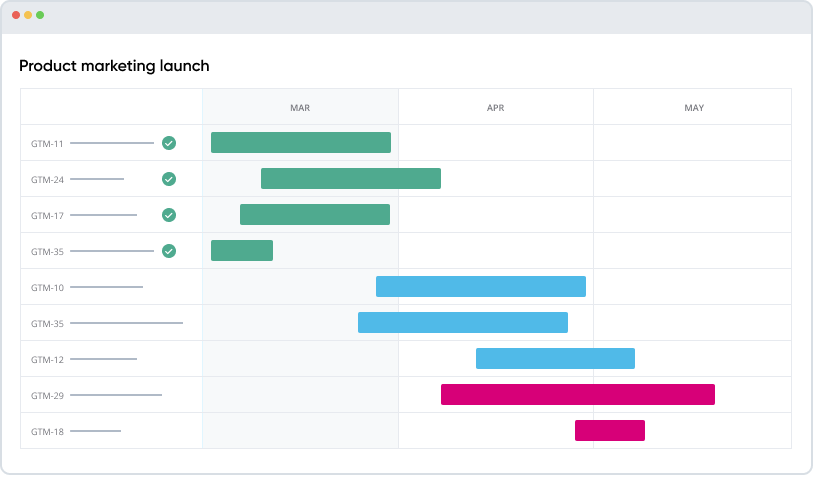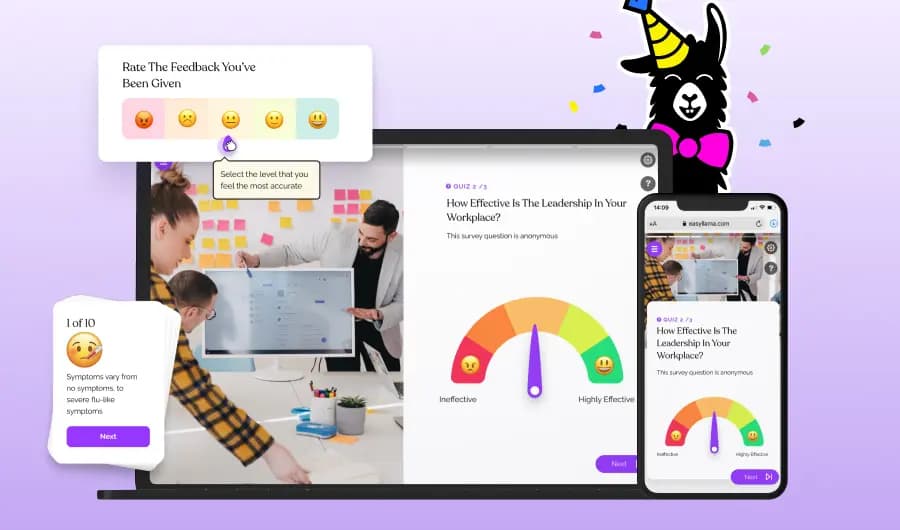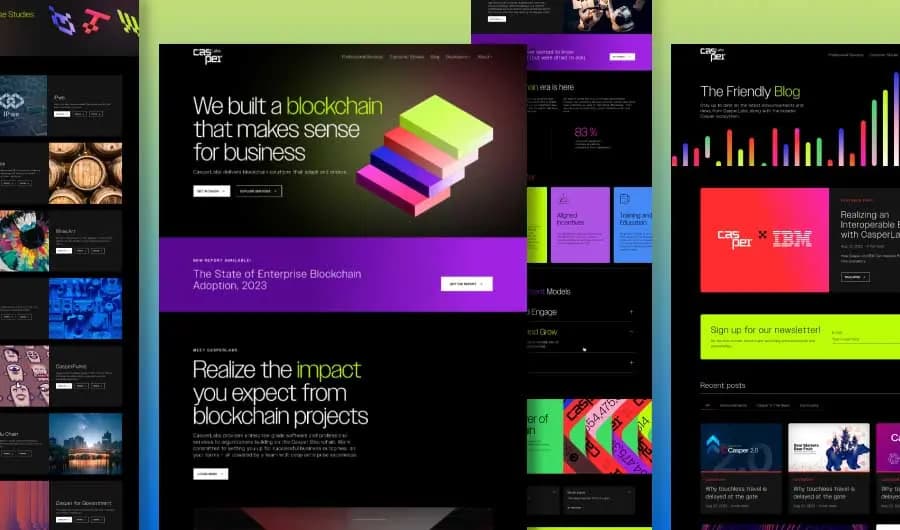
Product
Crafting a Winning Go-To-Market (GTM) Strategy
When Apple launched the iPhone in 2007, smartphones were just basic tools for calls and text messages. However, Apple saw beyond this. They introduced a device that was not just a phone, but a versatile tool capable of internet browsing, multimedia playback, and functioning as a pocket-sized computer. Focusing on user experience, Apple designed the iPhone to be intuitive and stylish, making it distinct from the smartphones of the time.
The introduction of the “App Store” was a game-changer, transforming the iPhone into a platform for a myriad of applications and services essential for everyday life. Apple's strategy was revolutionary, not merely about selling a device, but changing how we live, play, learn and work. This approach catapulted the iPhone into a global phenomenon, redefining personal technology and the access to worldwide information.
In their early cohort product rollout, Apple cleverly targeted consumers seeking more from their mobile devices, turning the smartphone from a simple communication tool into an indispensable part of modern life. Challenging market incumbants such as Palm and Blackberry required functional differentiators, as well as precise messaging, intentional consumer targeting, and a little magic. Their innovative market entry strategy was key to the iPhone's unparalleled success, and the results are a tangible case study that's as close as in your pocket.
What Is a Go-to-Market Strategy?
A go-to-market (GTM) strategy serves as a comprehensive blueprint for effectively introducing and delivering your products or services to the intended market segment. This strategy incorporates a holistic plan of actions and tactics designed to secure a competitive edge and ensure your offering stands out within the marketplace.
For the successful implementation of a GTM strategy, it is imperative to define clear goals, milestones, and objective metrics for monitoring progress. Key performance indicators (KPIs) are essential for evaluating the strategy's success, with examples including but not limited to: customer acquisition cost (CAC), conversion rates, market share, revenue growth, customer retention, and customer satisfaction.
By devising a meticulously planned go-to-market strategy, organizations can confidently evaluate their product-market fit and transition from being market entrants to established contenders within the competitive landscape.
Creating Your Go-to-Market Plan
Every go-to-market strategy requires a clear plan for presenting a new product to the market, or growing the presence of an existing one in new areas. This plan is crucial for ensuring your project does well by covering essential questions:
- What product are you offering, and what unique issue does it tackle?
- Who is your perfect customer, and what problems do they face?
- Where do you plan to sell your product? Which markets are you aiming for, and what's the competition and demand like there?
- How will you connect with and attract your intended customers?
Launching a product requires significant effort. Regardless of how innovative your product is, the strategy you use to market and sell it is key to its success. Putting together a GTM plan is vital to ensure you've thought of everything and to avoid big mistakes, such as marketing your product to the wrong people or entering a market that's already full of similar products.
Why You Need a Go-to-Market Plan
A go-to-market plan is crucial when offering a new product or service. Situations where you need this plan include:
- Introducing a new product to a market you're already in, like when a well-known clothing brand starts selling beauty products.
- Expanding the sale of a current product into a new area, such as a grocery store chain moving into a new state.
- Trying out a new product in an unfamiliar market, like a tech startup releasing its first app.
Companies that have been around for a while need a GTM plan when trying something new or moving into new areas. Markets and competition change constantly, so a strategy that worked for one product launch might not work for another.
Differences Between a Go-to-Market Strategy and a Marketing Plan
A go-to-market strategy is designed to launch a new product or enter a new market. In contrast, a marketing plan outlines the steps for carrying out your broad marketing strategy. Unlike the go-to-market strategy, which focuses on a particular launch, a marketing plan is a broader, long-term strategy to achieve your marketing goals. It could be an annual guide or a comprehensive strategy for all your digital marketing efforts. The go-to-market strategy is informed by your wider marketing plan but is customized for a specific product introduction.
For instance, Bloomingdale’s marketing plan uses its loyalty program to offer discounts and gifts to frequent shoppers, aiming to build customer loyalty over time. This strategy is not tied to any single product launch but serves as an ongoing effort to engage customers.
On the other hand, Microsoft's go-to-market strategy for the launch of its third-generation Surface tablet was explicitly focused on that product. It aimed to solve a particular issue in the market: the lack of tablets that could perform as well as a full-fledged computer.
Manage Your Go-to-Market Plan Using a Project Management Tool
A go-to-market (GTM) strategy has many components, whether introducing a new product or venturing into new markets. A suitable project management platform can simplify this process by letting you see your whole strategy at a glance. This includes who is responsible for what, how tasks progress, and how they depend on each other. Plus, as your team works together on the GTM plan, you can track their progress in real-time.
9 Essential Steps for Building Your Go-to-Market Strategy
If you're launching a new product or moving into a new market, you know a solid go-to-market strategy is crucial for your success. But what exactly should this strategy include?

Step 1: Pinpoint the Issue Your Product Solves
Every impactful product launch targets a specific problem. For instance, Blackberry allowed people to check emails on the go, Uber made getting a taxi easier, and Dawn detergent helped clean greasy dishes more effectively. These products became valuable because they solved real problems for their users. They were successful because there was a clear demand for these solutions.
This idea is known as product-market fit, referring to how well a product meets a strong market need. Knowing if your product fits well with market demand is essential for standing out from competitors and ensuring you're offering the right product to the right people.
Step 2: Determine Who Your Product Is For
To make your GTM launch work, it's important to know who your product is designed for. Ask yourself:
- Who has a problem that your product can solve?
- What specific annoyances can your product help get rid of?
- What amount are people willing to pay to fix this issue?
Defining your target market effectively can be achieved by developing an Ideal Customer Profile (ICP) and buyer personas. These tools help you focus on and understand the specifics of the people who are most likely to buy your product.
Creating Your Ideal Customer Profile (ICP)
An Ideal Customer Profile (ICP) helps you identify who would benefit most from your product by focusing on their specific needs and purchasing capacity. To define your ICP, consider these key factors:
- Industry or Demographics: Specify whether you're targeting businesses in certain sectors like finance, law, or tech or individuals within particular demographic groups. For instance, a daycare might focus on families with children aged 1 to 5.
- Location: Think about where your ideal customers are based. For a tour company offering tours in English, focusing on customers from the US and Europe makes sense.
- Company Size: For B2B businesses, defining the size of the companies you're targeting is important. A co-working space, for example, could target startups with fewer than 20 employees.
- Budget: Consider what your customers are likely to spend on your product. This helps set your pricing and affects how your product is viewed in the market. A luxury watch brand, for example, will keep its prices high to match its image, whereas a consulting service might only look at businesses willing to spend a certain amount monthly.
- Buying Decisions: Understand what drives your customers to make a purchase. This could include whether decisions are made based on referrals or if a key person, like a CEO, usually makes the call.
- Challenges: Identify the specific problems your ideal customers face. A budget-tracking app might target those frustrated with using spreadsheets for financial planning.
- Media Preferences: Know where your customers prefer to get their information, whether it's through social media, magazines, or online browsing.
Detailing these factors allows you to tailor your marketing and sales approach to reach the people most likely to find your product valuable.
Crafting Buyer Personas
Think of your target market as a collection of unique individuals, each with their own issues, values, and aims. By creating buyer personas, you dive into the diverse groups of your target audience, helping you see your customers as real people.
Creating several buyer personas gives you a deeper understanding of your customers. For instance, here's a buyer persona for a company launching an app for real estate investing:
Persona: Alternative Investor
- Age: Retiring age
- Risk-averse
- High net worth individual
- Seeks to invest in Real Estate
- Prefers using an online investment platform
- Looks for secure, stable investment opportunities with potential for steady growth
- Values an intuitive, easy-to-navigate platform that offers comprehensive real estate investment options
Buyer personas and ideal customer profiles (ICP) seem similar, but they serve different roles. An ICP describes your ideal customer broadly, while buyer personas zoom in on specific characteristics, representing different types of people within your ICP. Each persona helps you tailor your marketing and sales strategies to connect effectively with various segments of your audience.
Step 3: Evaluate Market Demand and Competition
Once you've defined what makes your product special and who it's meant for, the next important step is to look into the market. It's vital to check that there's a real need for your product and that the market isn't too crowded with similar options. To help with your evaluation, think about these questions:
- What companies are already selling something like your product?
- Who are their target customers, and where are they located?
- What makes your product different or better than what's already available?
- Is there a genuine interest in your product, or are there too many similar products out there?
To get a full picture of your position, you need to do a competitive analysis. This means researching to identify your competitors, both directly and indirectly, and understanding what they do well and where they might be lacking compared to your product. This knowledge is crucial for figuring out how to position your product in the market successfully.
Step 4: Define Your Main Messages
Your next move is to decide on the main messages you'll share with potential buyers. It is important to customize these messages for each type of customer you've identified and speak directly to their specific needs and concerns.
For this, you can use a tool called a value matrix. This tool helps you list out each customer type, their main issues, how your product helps, and a straightforward message that shows how your product is the solution they've been looking for.
Let's return to our example with the company launching an app for real estate investing. Focusing on the "Alternative Investor" persona, who values premium experiences, here’s how their value matrix could be set up:
- Challenges
- Nervous about picking the right Real Estate deals online.
- Scared of risky investments that might not grow.
- Product Benefits
- Risk assessment tools and calculators to figure out money's growth.
- Easy-to-use app that guides to the best properties.
- Primary Message
- "Simplify investing, secure your future."
Repeat this process for each buyer persona, tailoring the message to meet their unique requirements.
Step 5: Detail the Customer's Buying Journey
Once you've pinpointed your buyer personas and their corresponding messages, it's time to outline the steps a customer takes, from realizing they have a problem to considering and finally deciding to buy your product. This process is important for planning your content marketing, as it helps you figure out when and what type of content to share with potential customers to influence their decision-making.
This buyer’s journey is often visualized as a funnel divided into three main parts:
- Beginning of the Funnel: This is where customers know they have an issue and start looking for ways to fix it. They might not know your product yet. Your aim is to get their attention and make them think about your product as a possible solution.
- Middle of the Funnel: At this point, customers are comparing your product with others. Your goal is to show them why your product is the best choice.
- End of the Funnel: This is when customers are about to make a purchase. You need to convince them that buying your product is the right decision.
Step 6: Choose Your Marketing Platforms
Marketing channels are the various ways you share content to get people interested in your product and guide them toward purchasing. These can include things like social media, online ads, blogs, articles that help your website show up in searches (SEO), and email campaigns. When picking which platforms to use, consider who your customers are and where they are in their decision-making journey.
- Match the platforms to where your audience likes to get their information. It’s important to pick platforms that fit with your target customers' habits. For example, if your audience spends much time on YouTube but not much on Instagram or Facebook, then advertising on YouTube is likely a better choice than posting on social media.
- Adjust your approach based on the buyer's stage. Different marketing tools work better at different points in the customer's journey. SEO articles can draw people who are just starting to look for solutions to your site. Detailed case studies or webinars can give people who are already thinking about buying your product the information they need. And for those who are almost ready to buy, offering something like a free trial can convince them to take the leap.
Step 7: Plan Your Sales Approach
To make your go-to-market (GTM) strategy work and sell your product, you need a plan for reaching and selling to your target audience, turning potential customers into actual buyers. This is where you define your sales strategy.
Here are four basic sales strategies you can consider. A combination of these strategies might work best for your specific product and business needs.
- Direct Access Shopping: Customers find and buy your product by themselves, usually online. This method is great for online stores and doesn't require a sales team, but you'll need to focus on marketing to get people to your site.
- Sales Engagement: Your sales team works to build relationships with potential customers, helping and convincing them to buy your product. This fits products that are more expensive and complex, like software for teams.
- On-Site Sales: This approach targets big deals with large companies and involves more in-depth sales efforts and longer sales closing times. The potential profits are high, making it ideal for selling big-ticket items like corporate software.
- Partnership Distribution: Another company sells your product for you. This method means you have less control over how your product is marketed, but it can be very cost-effective. It works well when you partner with a company with a related product line, such as a cereal brand partnering with a supermarket chain.
Step 8: Define Clear Objectives
Starting with clear objectives is crucial for any effective go-to-market (GTM) strategy. Setting goals helps you focus on what you need to achieve, gives you a timeline for your efforts, and allows you to measure your progress. Without specific goals, it's difficult to evaluate the success of your strategy.
Here are some methods to create measurable goals. Depending on what your business needs, you can use these individually or together:
- SMART Goals: This method ensures your goals are Specific, Measurable, Achievable, Relevant, and Time-bound. For example, a SMART goal might be for a new app launch: “Achieve 500K downloads and 100K new users within six months of launch through targeted marketing campaigns and user engagement strategies."
- Key Performance Indicators (KPIs): KPIs are numbers that show how you're doing in reaching your business goals. To launch a new product, you might look at numbers like total sales or how many people click on your ads. Remember, the SMART goal approach can also guide you in setting up your KPIs, for example, “Increase Monthly Active Users (MAU) by 20% month-over-month for the first six months post-launch.”
- Objectives and Key Results (OKRs): This system connects what you want to achieve (objectives) with how you'll know you're getting there (key results). It's set up like "I will [objective] as shown by [key result]." An example is: "Drive rapid user acquisition and engagement for the new app by achieving key results including 50K downloads, 40% retention rate among monthly active users, a 4.5-star app store rating, and $20K in revenue from in-app purchases within six months.”

Step 9: Set Up Clear Workflows
Turning a great go-to-market (GTM) strategy into reality goes beyond just making a plan; it's all about how you carry out that plan. That's why having clear, defined workflows is crucial for successfully launching a product. Even the best strategy won't work if it isn't properly shared and implemented by your team. To make your GTM strategy actionable, consider these points:
- Share and Collaborate Efficiently: Don't let your strategy sit unused. Make sure all the details of your plan are stored where everyone can easily find and access them. Using a comprehensive project management tool can help you keep all your plans, projects, and procedures organized in one spot. This allows your team to work together effectively within the same platform that houses your GTM strategy.
- Track Progress and Make Adjustments: For your goals to truly impact your GTM strategy, they must be part of your everyday tasks. Instead of just setting goals, establish a routine to review and assess your progress regularly, such as at the end of each week or month. Use a central project management tool to update your team and stakeholders, ensuring everyone is informed and aligned.
- Standardize Your Process with Templates: Your GTM strategy includes many steps and moving parts. While each product launch might be slightly different, you don't need to start from scratch every time. By creating templates for common processes and strategies, you can avoid doing the same work repeatedly. This might include templates for identifying your target audience or crafting your messaging, plus a general template for outlining your GTM strategy. Choose a project management tool that allows you to easily create, save, and share these templates, streamlining your team's work on a regular basis.
Get Ready, Plan, and Launch
Taking a product to market is a big move. But, with a good plan that outlines who your audience is, what you'll tell them, clear targets, and step-by-step actions, your next product launch can be set on the path to success. These nine steps make creating a strong go-to-market strategy much less intimidating.
About Scalio
Scalio is a global digital product agency driving digital success in over 30 industries. Through expert engineering, strategy, and design, we build and scale platforms and digital experiences for global brands.
Learn more about our expertise in your industry.
_
If you have more questions or interest in meeting Scalio Leadership Team, feel free to reach out for a friendly follow-up!

Lawrence Valenti
CCO | Managing Partner
Email: [email protected]
LinkedIn

Joshua Lucas
COO | Managing Partner
Email: [email protected]
LinkedIn

Micah Lucas
CTO | Managing Partner
Email: [email protected]
LinkedIn

Bradley Greenwood
CEO | Managing Partner
Email: [email protected]
LinkedIn





